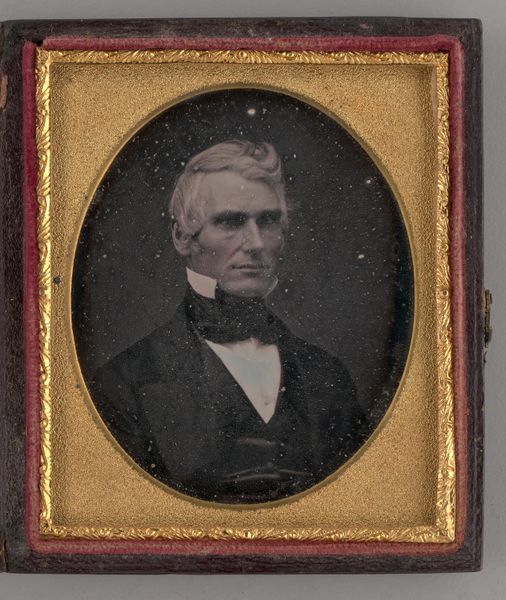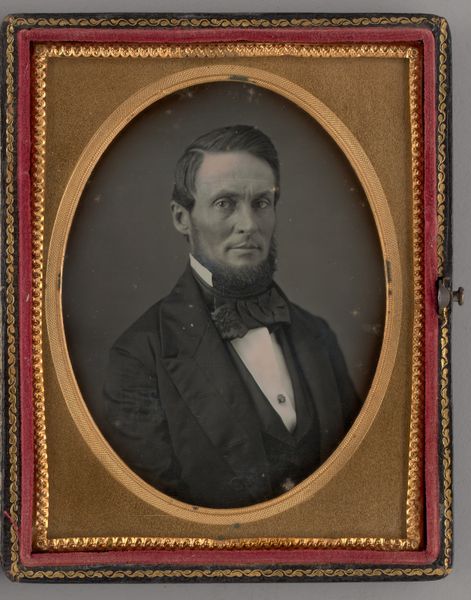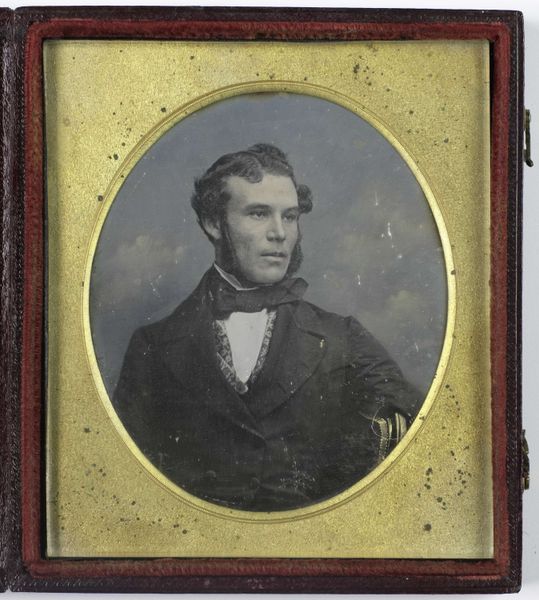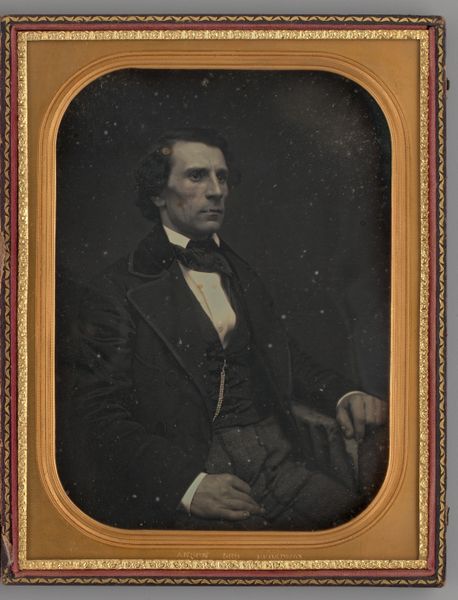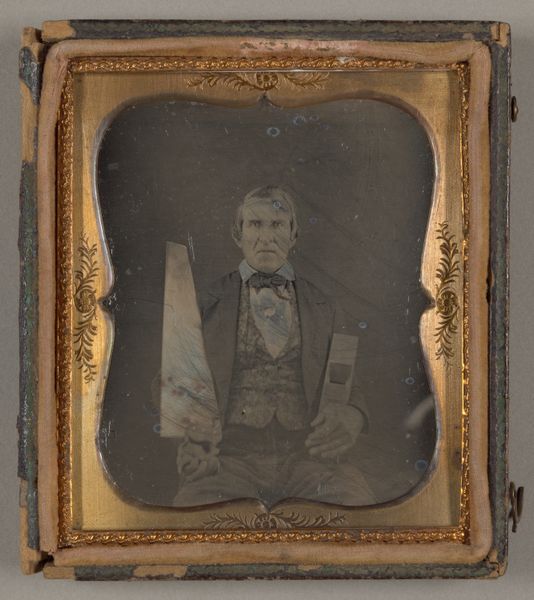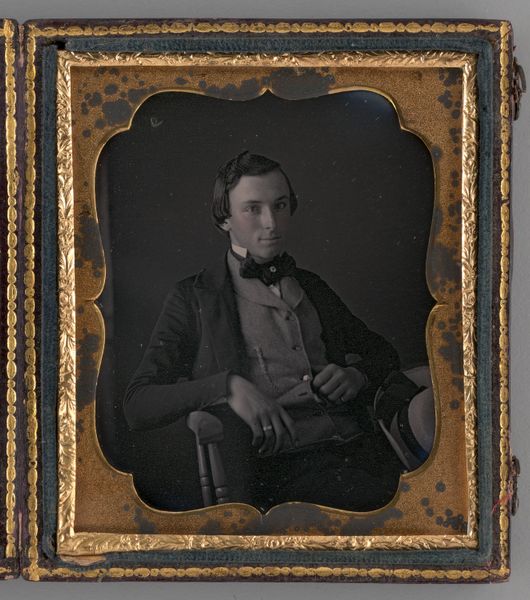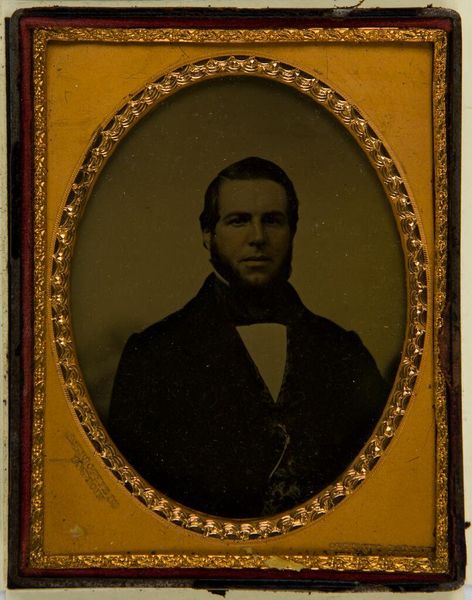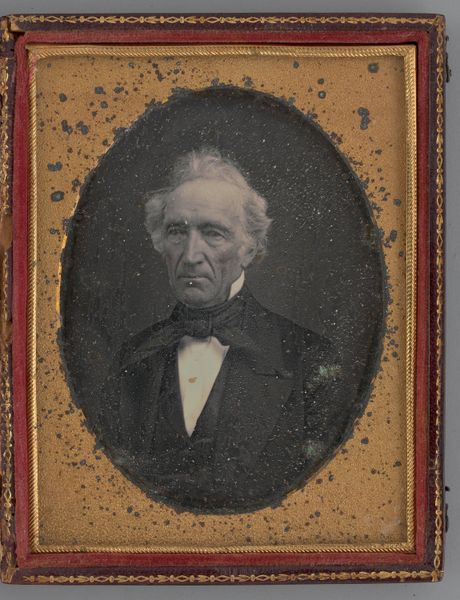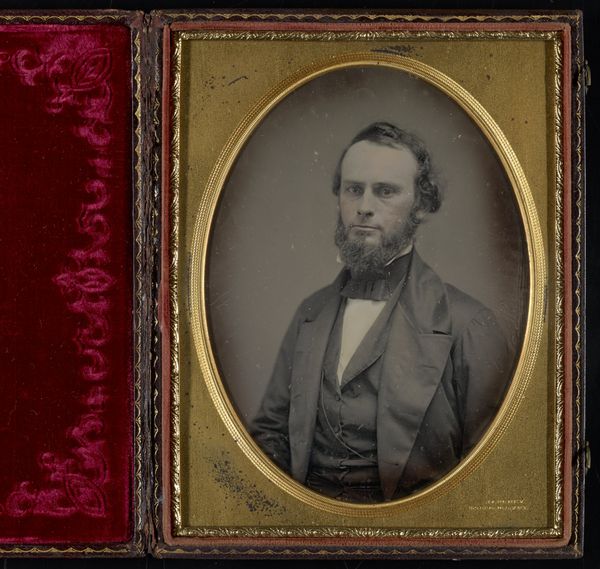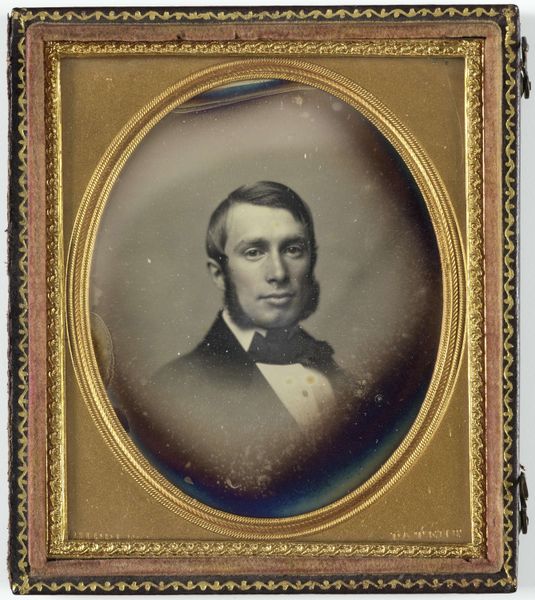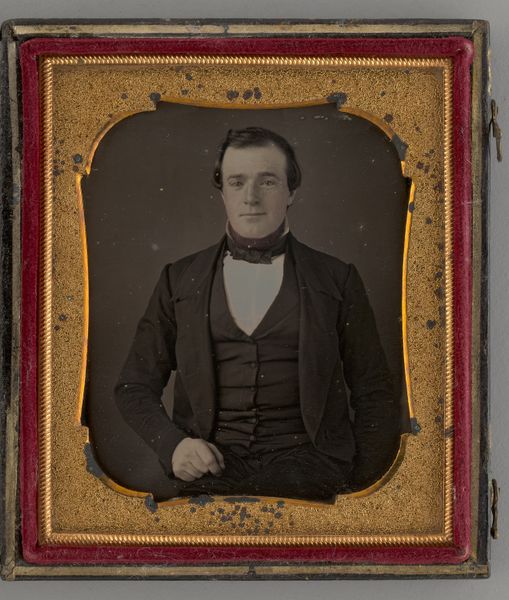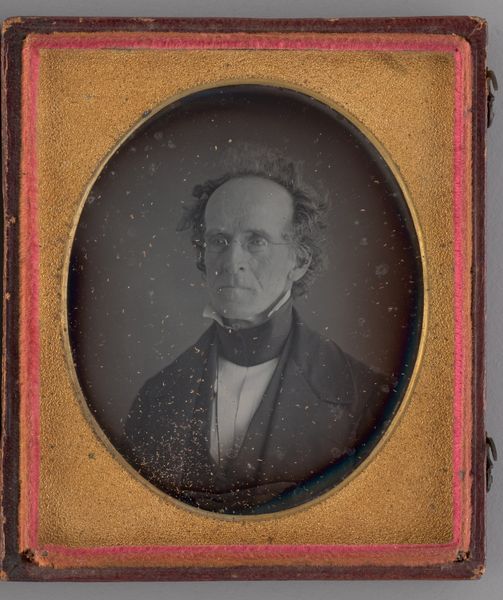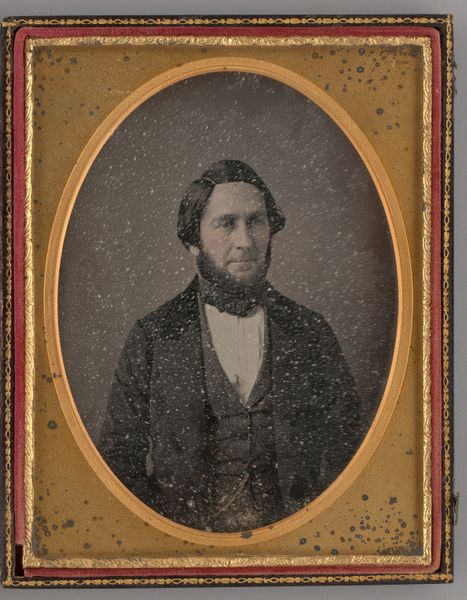
daguerreotype, photography
#
portrait
#
16_19th-century
#
daguerreotype
#
photography
#
historical fashion
#
19th century
#
men
#
united-states
Dimensions: 10.7 × 8.3 cm (4 1/4 × 3 1/4 in., plate); 11.8 × 19 × 1.2 cm (open case); 11.8 × 9.5 × 1.7 cm (case)
Copyright: Public Domain
Curator: This intriguing daguerreotype from 1854 is cataloged as an "Untitled Portrait of Charles Darling" and is held at The Art Institute of Chicago. What's your immediate impression? Editor: Severe. The sitter's expression combined with the formality of the medium – and the hint of faded opulence around the edges – feels weighty, almost oppressive. The stern, masculine portraiture definitely says 19th century America. Curator: And look at that curious sash emblazoned with stars! I find it captivating how such seemingly simple forms become potent signifiers of aspiration. The stars feel almost Masonic in their symbolism of higher knowledge. Editor: Mmm, that sash raises some immediate questions, doesn't it? Considering this was the mid-19th century, right before the Civil War, one can't help but interpret those stars through the lens of the fracturing Union. Is this a symbol of patriotic yearning, or something else entirely? Curator: Perhaps it hints at an individual invested in the promise of Manifest Destiny, which offered promises of new social opportunities... remember that, photographically, daguerreotypes offered something qualitatively different from painted portraits. Editor: Interesting idea. The emergence of photography gave those in the emerging middle classes more opportunities to acquire likenesses and emulate social practices of the traditional elites. Was Charles Darling, in effect, staging himself as part of a new order, laying a claim to influence? Curator: The potential of portraiture, regardless of class, allowed for an immediate participation in American mythology, offering a physical manifestation of hope, aspiration, and civic participation through its symbols. But that’s just one way of reading his sartorial decisions... Editor: Absolutely, there are multiple ways. Without more historical information on Charles Darling himself, these stars take on multiple potential meanings. Was he a Freemason as you hinted, or perhaps active in a particular political cause? The lack of clear identification compels viewers to weave their own interpretations. Curator: Precisely. He becomes almost a blank slate upon which we project anxieties and aspirations. His lack of a clear, historical narrative in this object provides some agency for modern audiences. Editor: Right – this portrait asks more questions than it answers, challenging us to look beyond the surface of the image to examine the larger social and political forces at play. Curator: It highlights the power of symbols, their shifting significance, and how a single image can be a mirror reflecting not just a past individual, but the very society that views it, in this case the U.S. Editor: Indeed, we’re left grappling with history, symbolism, and the complexities of identity in a turbulent time, still so relevant today.
Comments
No comments
Be the first to comment and join the conversation on the ultimate creative platform.
